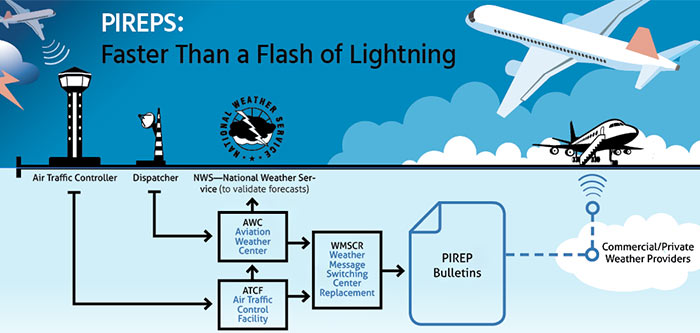In the tech community, the term “crowdsourcing” refers to using resources generated from a wide range of individuals via the Internet. The crowdsourcing trend emerged around 2005 and since then, one of the most successful examples to date has been the traffic app Waze. By allowing users to report local traffic conditions and current road closures, Waze is able to use that real-time community feedback in order to provide better directions.
While this term maybe fairly recent, the concept of using member feedback in order to modify routes has been around for decades in the pilot community. “Pilot Reports,” better known as PIREPS, are weather reports issued directly by pilots based on their first-hand experience with current weather conditions while in flight.
From the moment pilots provide PIREPs to the dispatcher or air traffic controller, they become important reports that benefit the entire system. They enable other pilots with the knowledge that can aid in preflight planning and decision-making. They are able to give air traffic control personnel the information they need to inform more pilots in their airspace with timely, actionable information from a trusted source as to what to expect. And, they are also one of the major ways that National Weather Service forecasters can verify their upper-air forecasts as well as fill gaps in ground-station coverage.
PIREPs provide experts and computer models with valuable data to enhance future weather forecast products. Recently, Air Line Pilot explored the importance of PIREPS and the need for more of them.


